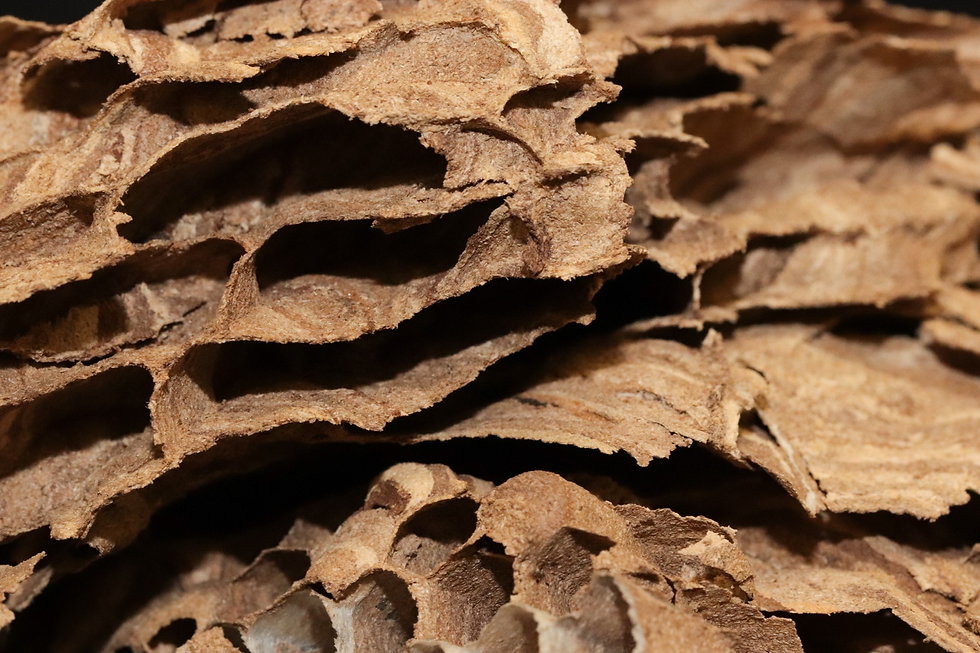Having a wasp nest near our home or workplace is not exactly reassuring😱, but do you know that it is kind of safe to have it nearby?🤯

First, wasps (except the queen) usually have a short lifespan🐝, and as most will die out after a season, their nest will be abandoned🏚. Rarely would a new nest be built near an old one, therefore, it is best not to remove an abandoned nest.
Surprised? What’s more surprising is that wasp nests are actually made of paper or thin wood. Wasps will gather paper-like materials (e.g. wood pulp) mixed with their saliva in order to build their nest. If there are scratch marks on the benches or trees in the park, it can be caused by wild cats🐱, or wasps who are building a nest nearby.

Wasp queens👑 usually pick the location of building a nest during Spring and start breeding after that. In each hexagon cell the queen will lay an egg. The cells together compose a brood comb. Among different species of wasps, there can be more than one layer of brood comb inside a wasp nest, and with or without a protective envelope (like a shield🛡️) surrounding the brood comb. When a nest is shielded by an envelope, it helps maintain the best temperature🌡 and humidity conditions for the hatching and development of the larvae which have emerged from eggs but also for other hardworking adult workers. Surrounded by the envelope, the entrance of the nest is usually located at the bottom.



Did you know that all the workers are females?👧 They are the ones that will relentlessly build the nest, take care of the brood, collect the food for colony members, and defend the nest from intruders. Males are produced too, but in small numbers and only for mating with the future queens. Most worker wasps die before Winter, some female wasps, the future queens, will survive until they develop their own colonies the following Spring🌺.

The architecture of wasp nests varies a lot and each species has its own nest shape and is built in different habitats. Some of these abandoned nests are part of the collection of the HK Biodiversity Museum, where you could appreciate this diversity of architecture and sizes. So do not hesitate to come have a visit if you find it interesting after watching this introduction😉.
Text: Kiu

Comments